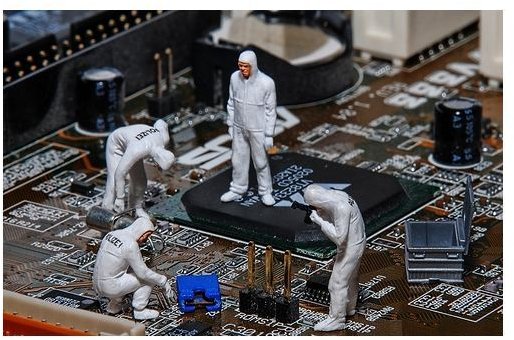How to Reset Motherboard Jumpers
Jumpers are motherboard pins that can be used to configure critical settings such as the CPU voltage and over-clocking settings. Even though there is a new trend among motherboard manufacturers to build jumper-less boards, some critical settings such as the boot sequence and password resets still require jumper pins on most boards.
Jumpers allow for configuration changes to be made by shorting, or leaving a jumper open, the two pins that make up the jumper. The process of shorting a jumper involves placing a special cap that bridges two pins. In many cases the jumpers are configured as a group of four or more pins to allow for a greater array of options to be configured.
Features that are Configurable by a Jumper Reset
Jumpers are often required to configure settings such as these:
Processor CPU Voltage – Many new motherboards require a jumper setting for the CPU voltage. Of course this must be set correct, according to the manufacturer’s specifications. However, some gaming enthusiasts have been known to push the boundaries and over-clock their processors to get better performance.
Processor Bus Speed – The requirements for properly setting this parameter will depend on CPU specifications and the manufacturer’s recommendation. In some cases, the CPU can be made to run at various bus speeds. However, it is strongly advised that the manufacturer’s recommendation be followed in this regard.
Processor Type – The motherboard and CPU manuals will guide the computer technician in properly setting the processor type jumper, without the proper setting the CPU could be damaged or fail to run at optimal level.
CMOS Password Reset - This will reset any password that was stored in the CMOS for accessing the CMOS.
Flash BIOS Enable - Some boards require that a jumper be specially configured before the BIOS (basic input output system) can be updated. As usual, check the manual for the correct setting.
Clear CMOS – In situations when a technician wants to wipe the slate clean and reconfigure the BIOS from scratch, he or she may reset the CMOS by shorting the CMOS reset jumper.
How to Reset a Jumper
The layout, labeling and numbering of jumpers will differ among manufacturers, so the motherboard’s user manual will have to be used to figure out where each jumper pair is. To reset a jumper, you may need a pair of bird beak pliers, a screwdriver and an antistatic wristband.
- Open the computer case.
- Use the motherboard manual to identify the jumper you want to reset.
- Use the pliers to remove or short the jumper according to your objective.
Dealing with Jumper-less Boards
Many motherboard manufacturers are now building jumper-less motherboards. These motherboards allow for more of the computer’s settings to be controlled from software menus. While this makes it more convenient for quick changes to be made without opening the computer, having a way to manually configure certain critical settings will ensure that software snafus won’t cause an issue, although the reverse could also be true. However, there are some who prefer the security that jumper based systems offer, by requiring physical access to the system to make security sensitive configurations (i.e., changing the boot sequence).
Summary
As should be obvious, a jumper reset can affect a wide array of system parameters. Which in turn can affect performance as well as computer security. This is why it is important for computers to be physical secured from manipulation, especially if the computer performs some mission critical function or is particularly susceptible to security threats.
References
Author’s personal experience
Image credit: “How to reset a motherboard Jumper.” https://www.flickr.com/photos/hape_gera/4285873104/
